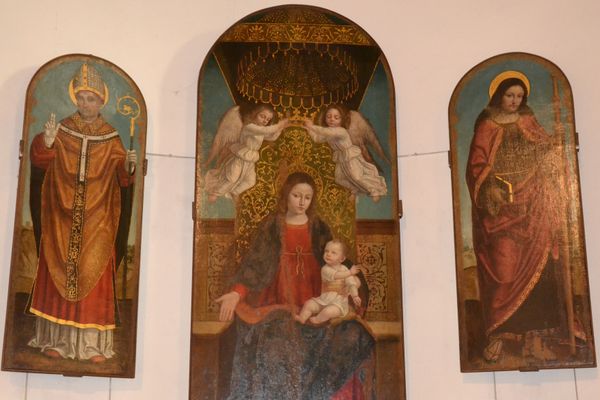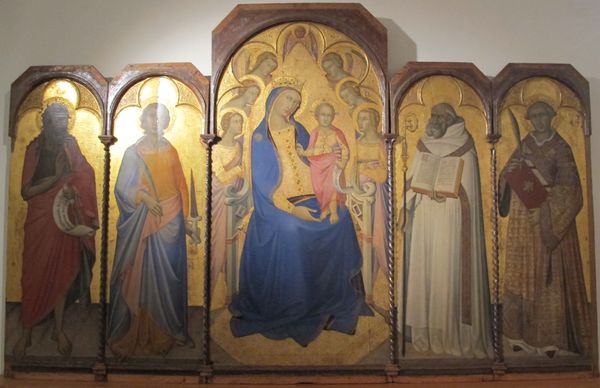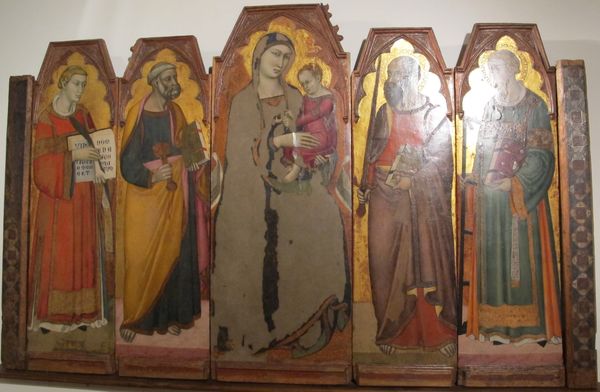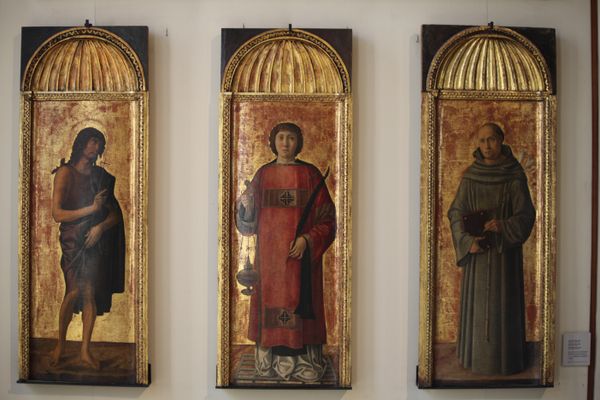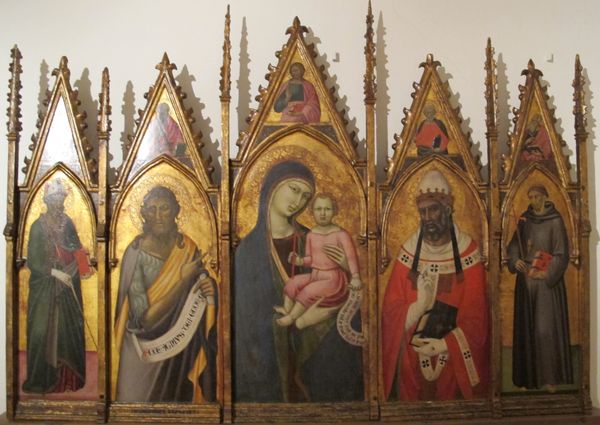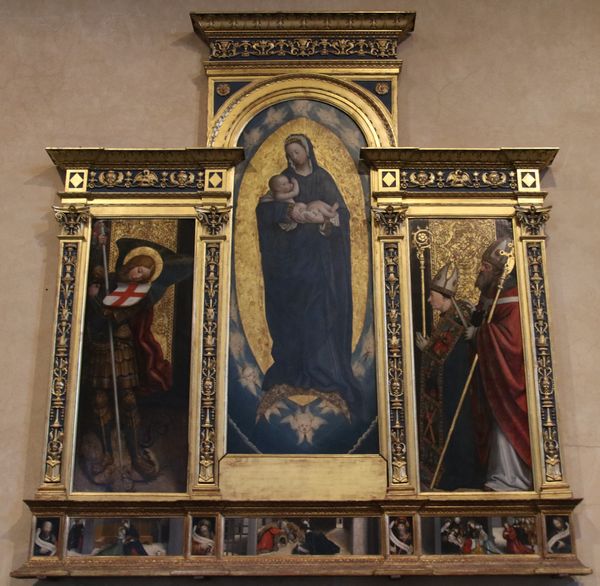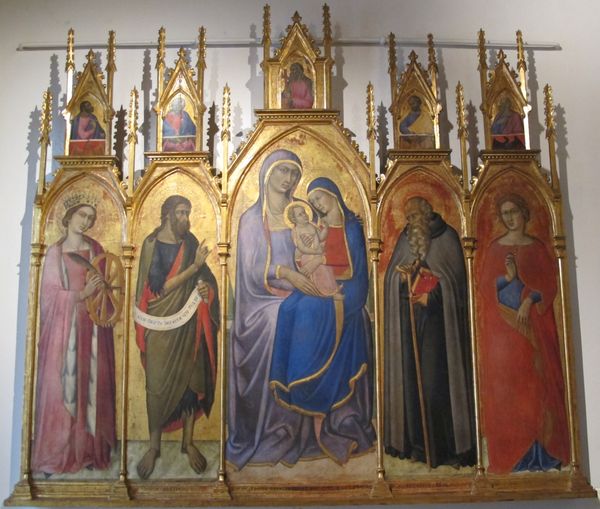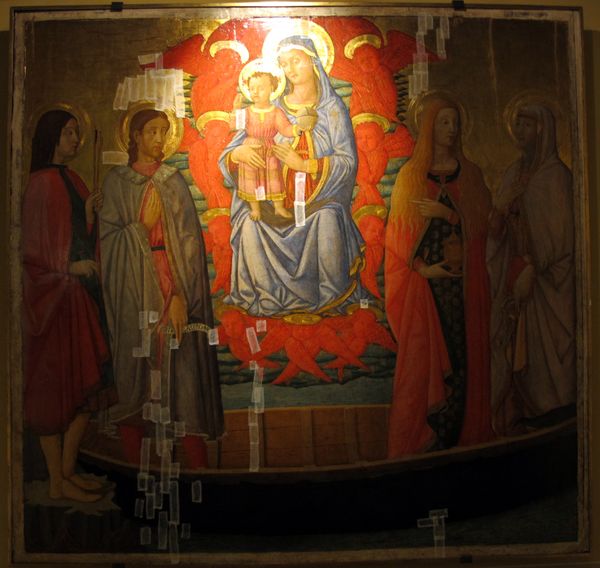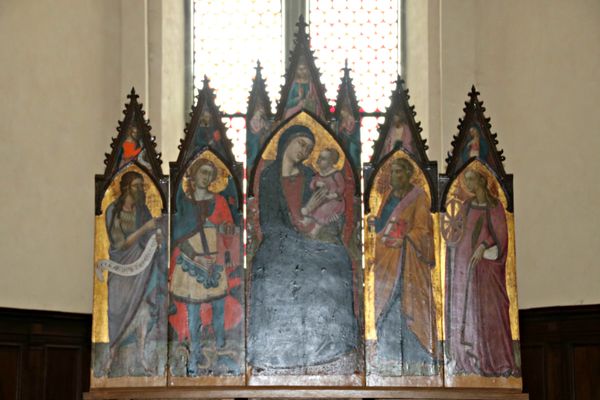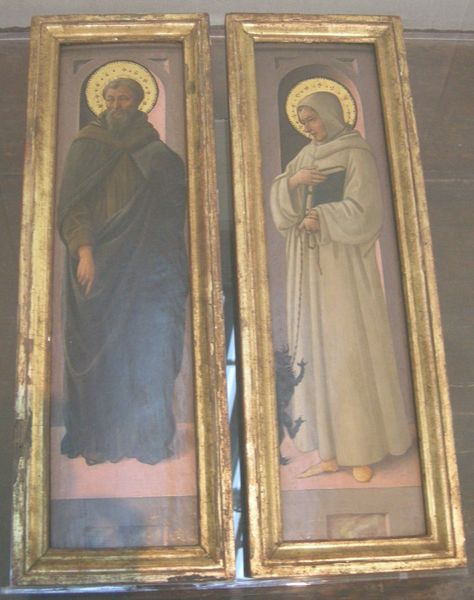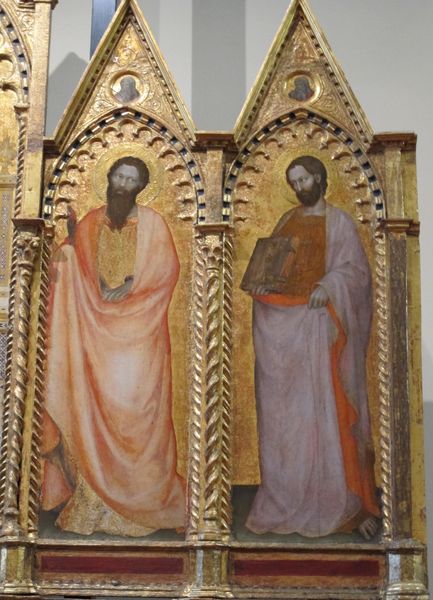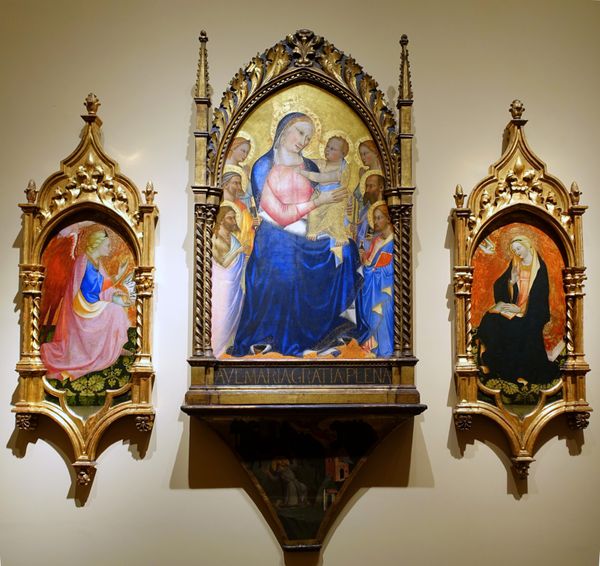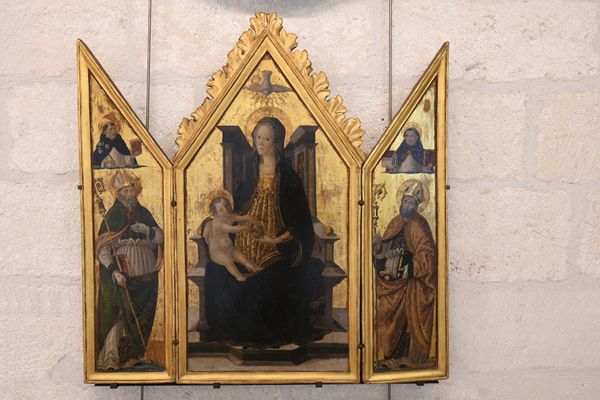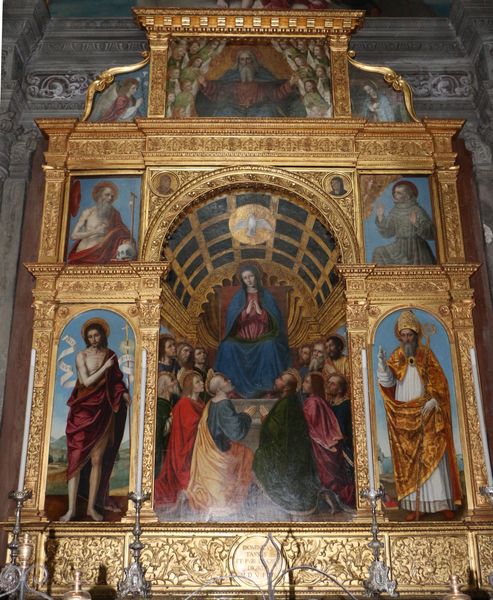
panel, tempera, painting
#
portrait
#
panel
#
tempera
#
painting
#
figuration
#
history-painting
#
italian-renaissance
#
early-renaissance
Copyright: Public domain
Curator: Here we see Ambrogio Bergognone’s “Polyptych. Madonna and Child, Saint James the Great and Saint Henry,” painted around 1484, rendered in tempera on panel. Editor: Immediately striking, isn’t it? The figures possess a gentle solemnity. I'm drawn to the somber color palette and almost naive simplicity in the characters' representation; they give a great sense of humbleness and quiet strength. Curator: Absolutely. These polyptychs, especially those found in churches, functioned as visual anchors, shaping communal identity and reinforcing the power structures within the religious hierarchy. Bergognone's position in the late 15th-century Lombardy gives insight into this moment, where we can observe that political influence of the Church started do diminish Editor: Indeed, the very format of a polyptych is inherently hierarchical, especially at that moment of political tensions. We might even consider the Madonna's central placement through the lens of intersectional feminism, interrogating how it upholds or subverts the era's patriarchal power dynamics within sacred imagery. I wonder, was the positioning of the Saint James and Saint Henry at the same hierarchical level? Curator: That is interesting. Notice how the background has very minimal depth, which situates the work more in line with earlier medieval devotional panels than with the humanistic perspective taking hold elsewhere in Italy during that time. The materiality itself contributes to the artifice; we are acutely aware these are constructed representations. Editor: Precisely! Tempera’s quick-drying nature leads to meticulously blended, yet firm, brushstrokes, creating figures which convey a very precise image. It's fascinating how artistic techniques can either perpetuate or challenge pre-existing social paradigms. Considering that Bergognone had no need to pursue depth in this work, he must be interested in how he portrayed the different actors. Curator: The institutional demand from patrons greatly conditioned artistic choice back then, indeed, but if you look closely at the artwork through its social framework, you'll note how artistic style has a tendency to favor popular narratives that reinforced their base power structure, as we previously discussed. Editor: Examining “Polyptych. Madonna and Child, Saint James the Great and Saint Henry” reveals that the function of the Church can provide insights into the beliefs and values held by its artists. Thank you for illuminating its many sociopolitical textures. Curator: And thank you for opening avenues for us to further explore what makes up society itself!
Comments
No comments
Be the first to comment and join the conversation on the ultimate creative platform.
